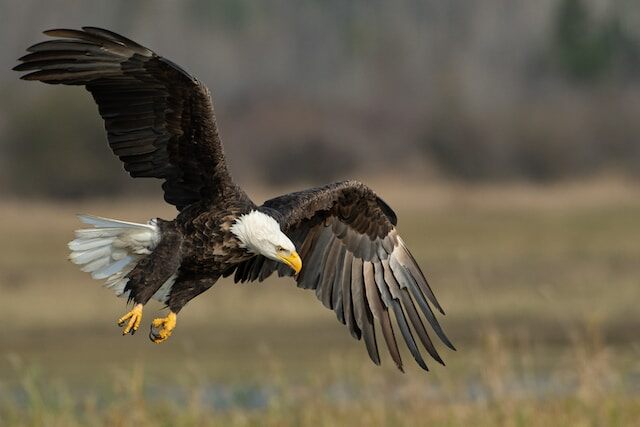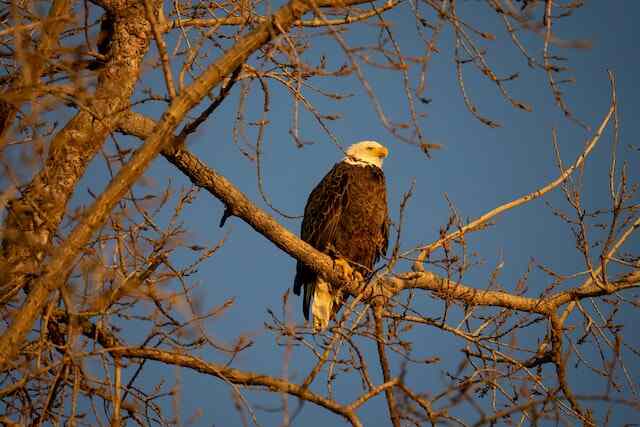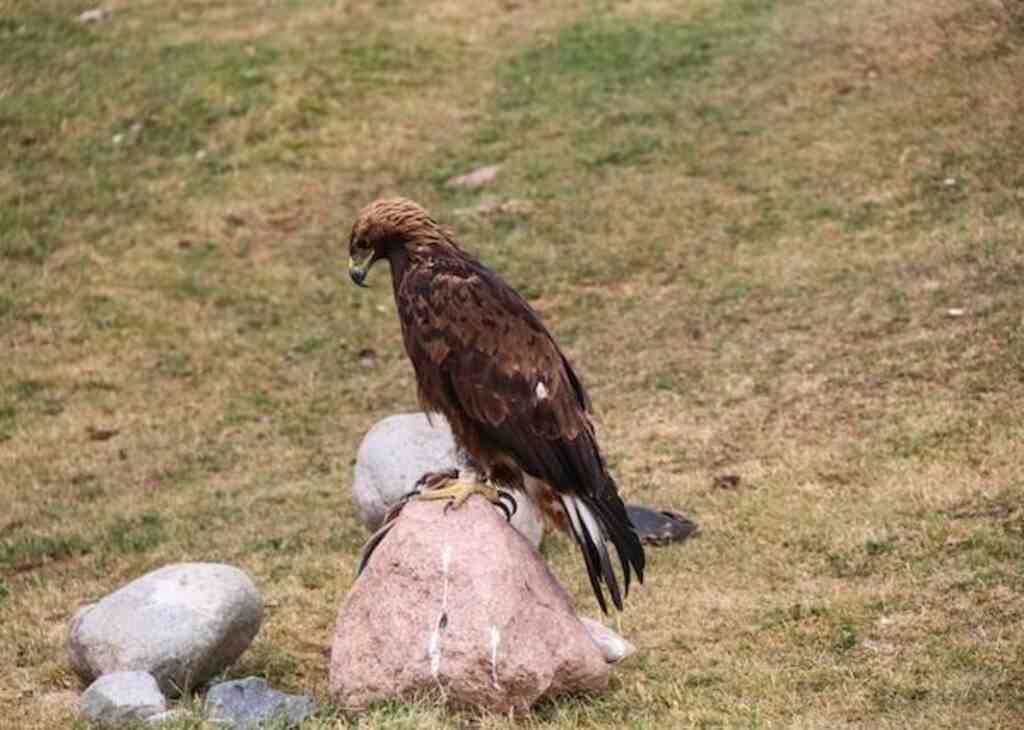Eagles, majestic creatures renowned for their hunting prowess, have long captivated human imagination. While perceived as purely carnivorous, there is a common misconception regarding their scavenging habits.
Are Eagles Scavengers? This article unveils the truth behind this belief and explores the intriguing dietary habits of eagles.
Understanding the vital role of scavengers in ecosystems is crucial. Scavengers maintain ecological balance by consuming carcasses, preventing disease spread, and recycling nutrients.
By analyzing their feeding habits and digestive systems, we gain insight into these magnificent birds’ ecological impact and survival strategies.
Embark on a journey to uncover the fascinating truth about eagles and their place in ecosystems.
Table of Contents
- 1 Key Takeaways
- 2 Overview of Eagle Dietary Habits
- 3 Importance of Scavengers in Ecosystems
- 4 Definition of Scavenging
- 5 Examples of Scavengers in the Animal Kingdom
- 6 How Eagles Obtain Their Meals
- 7 Myths and Misconceptions About Eagles
- 8 The Role of Eagles in Maintaining Ecosystem Balance
- 9 The Science Behind Eagle Digestive Systems
- 10 Ethical Considerations
- 11 Conservation Efforts for Eagles
- 12 Frequently Asked Questions
- 12.1 How do eagles mate and reproduce?
- 12.2 What is the average lifespan of an eagle?
- 12.3 How do eagles communicate with each other?
- 12.4 What are the different species of eagles and how do they differ in diet and behavior?
- 12.5 How do eagles adapt to changes in their environment, such as natural disasters or human encroachment on their habitats?
- 13 Conclusion
- 14 Author
Key Takeaways
- Eagles are primarily known for their hunting prowess, but they can also scavenge for food when necessary.
- Scavenging behavior is an important survival strategy for eagles that allows them to obtain an alternative food source when hunting is difficult or unsuccessful.
- Scavengers play a crucial role in maintaining a healthy ecosystem by removing dead animals and plant material, preventing the spread of diseases and parasites, and reducing waste buildup.
- Conservation efforts, such as habitat restoration and minimizing human impact on eagle habitats and food sources, are crucial for preserving eagle populations and maintaining a balance between predator and prey populations.

Overview of Eagle Dietary Habits
Eagle dietary habits encompass a wide range of prey, including fish, small mammals, birds, and reptiles. Eagles are known for their exceptional hunting and foraging abilities, which enable them to capture a variety of prey species.
They are opportunistic predators, meaning that they will hunt and consume any prey that is available in their habitat.
However, eagles do have some preferences when it comes to prey selection. For example, they tend to prefer fish to other types of prey, particularly in habitats that are near water sources.
Additionally, they tend to target smaller prey, such as rodents and birds, rather than larger mammals.
Overall, while eagles are not typically thought of as scavengers, they do occasionally consume carrion and may scavenge if other food sources are scarce.
Understanding the dietary habits of eagles is important for assessing their role in ecosystems, including their potential impact on prey populations and the overall health of the environment.
Importance of Scavengers in Ecosystems
The presence of scavengers in an ecosystem is crucial for maintaining a healthy balance of decomposition that breaks down organic matter and recycles nutrients.
Studies have shown that up to 70% of animal biomass in some ecosystems is processed by scavengers, highlighting the importance and benefits of these creatures.
Scavengers play a critical role in removing dead animals and plant material, preventing the spread of diseases and parasites, and reducing the build-up of waste that would otherwise harm the environment.
Additionally, scavengers provide a food source for other animals, such as eagles, which helps to maintain the balance of the food chain.
Understanding the definition of scavenging is crucial as it helps to differentiate between predators and scavengers, which we will explore in the subsequent section.
Definition of Scavenging
Understanding the concept of scavenging is essential for comprehending the ecological role of organisms that feed on decaying organic matter.
Scavenging is the process by which animals consume dead plant or animal material that they have not killed themselves.
This behavior is often seen in carnivorous animals that consume the remains of other animals to obtain nutrients.
Scavenging can be seen as an adaptation that allows animals to survive and thrive in their environment.
Some scavengers have specialized adaptations, such as powerful jaws and teeth, that allow them to break down tough animal tissues, while others have developed a keen sense of smell to locate carcasses.
Overall, scavenging plays a vital role in the ecosystem by recycling nutrients and preventing the buildup of decaying organic matter.
Moving forward, it is important to explore examples of scavengers in the animal kingdom and how they contribute to the overall health of the ecosystem.

Examples of Scavengers in the Animal Kingdom
An array of organisms across the animal kingdom act as scavengers, playing a crucial role in nutrient recycling and maintaining ecosystem health.
Scavenging is a process where an animal feeds on animal or plant matter that is already dead, rather than hunting for prey.
Types of scavenging include facultative scavenging, where an animal feeds on both live prey and carrion, and obligate scavenging, where an animal exclusively feeds on carrion.
Scavengers are found in a variety of habitats, including oceans, forests, and deserts.
Examples of scavengers in the animal kingdom include vultures, hyenas, raccoons, and crabs.
Ecologically, scavengers play a vital role in breaking down dead organic material, preventing the buildup of toxic substances, and providing a food source for predators.
In the next section, we will explore how eagles obtain their meals.
How Eagles Obtain Their Meals
Eagles are known for their hunting prowess and are often considered apex predators. Their hunting techniques involve a combination of strategy, speed, and precision.
Eagles are also known to scavenge for food, particularly when prey is scarce or when they are unable to hunt for extended periods.
Understanding how eagles obtain their meals through hunting and scavenging behaviors is crucial to gaining insights into their ecological roles and behaviors.
Hunting Techniques
One of the ways eagles hunt is by using their keen eyesight to spot prey from great distances.
Comparing eagles’ hunting techniques reveals that they have adapted to different prey movements, such as the aerial pursuit of birds or the stealthy ambush of small mammals.
Eagles use their powerful wings to soar high above their prey, then dive at incredible speeds to catch it in their talons.
They also use their sharp beaks to tear apart their catch.
In addition, eagles have been observed using teamwork to hunt larger prey, such as deer or fish, by coordinating their attacks and taking turns.
By using these hunting techniques, eagles are able to efficiently and effectively catch their prey.
However, despite their prowess as hunters, eagles are sometimes known to scavenge for food as well.
Are Eagles Scavengers
Eagles are not typically considered primary scavengers, but they may scavenge opportunistically. Their main diet consists of live prey, but they may consume carrion when available.
While eagles primarily hunt, their ability to scavenge helps them take advantage of additional food sources, contributing to their adaptability and survival in various environments.
However, it’s important to note that their scavenging behavior varies among species and individual eagles.
Scavenging Behaviors
Scavenging behavior is an important survival strategy for many bird species, allowing them to find food when prey is scarce.
Eagles are no exception, and while they are primarily known for their hunting techniques, they are also known to scavenge.
Scavenging benefits eagles by providing an alternative food source when hunting is difficult or unsuccessful, and it can also provide important nutrients that are not commonly found in their typical prey.
However, there are also drawbacks to scavenging, such as the risk of exposure to disease or toxins from consuming carrion.
Additionally, relying too heavily on scavenging can lead to a decrease in hunting skills and overall fitness.
Overall, scavenging is a valuable tool for eagles, but it should be used in moderation to maintain a healthy balance.
It is important to understand these behaviors to dispel myths and misconceptions about eagles, such as the idea that they only hunt or that scavenging is a sign of weakness.

Myths and Misconceptions About Eagles
The Subtopic of Myths and Misconceptions about eagles is a crucial discussion that helps to clear up misunderstandings surrounding these majestic birds.
There are many common misconceptions about eagles, such as their ability to see miles away or their tendency to attack humans.
However, these claims are often false and must be debunked through a scientific and objective approach.
Common Misconceptions
Misconceptions about eagles are common and often involve their behavior and feeding habits. Many people hold stereotypical beliefs about eagles, such as the idea that they are scavengers who only eat carrion.
However, this is not entirely true. While some eagle species, such as the bald eagle, do scavenge for food occasionally, they also hunt and catch live prey.
In fact, eagles are apex predators and play an important role in maintaining the balance of their ecosystems.
Another common misconception is that eagles mate for life.
While many eagle pairs do remain together for several years and may even mate for life, others may separate or take on new mates if their partner dies or becomes infertile.
It is important to debunk false claims about eagles and educate the public about their true behavior and feeding habits.
Debunking False Claims
It is important to provide accurate information about the behavior and feeding habits of apex predators like eagles in order to dispel any false claims or stereotypes.
There are several misconceptions surrounding eagles being scavengers, which can lead to a misunderstanding of their role in the ecosystem.
However, it has been scientifically proven that eagles are not solely scavengers and actually hunt for their food.
In fact, studies have shown that eagles obtain up to 90% of their diet from live prey, such as fish, birds, and small mammals.
Although they may scavenge on occasion, it is not their primary means of sustenance.
Debunking these myths about eagle scavenging habits can help us better understand their important role in maintaining ecosystem balance as apex predators.
The Role of Eagles in Maintaining Ecosystem Balance
One crucial aspect of maintaining ecosystem balance is the role that eagles play. As apex predators, eagles play a crucial role in regulating prey populations, which in turn affects the entire food chain.
They also scavenge on carrion, which helps to remove dead animals from the ecosystem and prevent the spread of disease.
In fact, eagle conservation has been shown to have a positive impact on the health of entire ecosystems.
Understanding predator-prey relationships and the role of scavengers like eagles is essential for maintaining a healthy and balanced ecosystem.
| Role | Impact on Ecosystem | Importance |
|---|---|---|
| Eagles as predators | Control prey populations | Regulates food chain |
| Eagles as scavengers | Remove carrion from ecosystem | Prevents spread of disease |
| Eagle conservation | Positive impact on ecosystem health | Essential for ecosystem balance |
The science behind eagle digestive systems will be explored in the subsequent section.

The Science Behind Eagle Digestive Systems
The role of eagles in maintaining ecosystem balance is a widely discussed topic, and to understand it better, we need to delve into the science behind their digestive systems.
Eagles have a highly efficient digestive system that allows them to extract maximum nutritional value from their prey.
However, they are also known to scavenge on dead animals, which begs the question of whether they are scavengers.
Studies have shown that eagles can digest scavenged meals just as efficiently as fresh prey, and this flexibility allows them to survive in different environmental conditions.
Furthermore, scavenging provides an important source of food for eagles, especially during times of food shortages.
Understanding eagle digestion efficiency and the nutritional value of scavenged meals is vital to comprehend the role of eagles in maintaining ecosystem balance.
However, the ethical considerations of scavenging by eagles also need to be examined, which we will explore in the subsequent section.
Ethical Considerations
When considering the ethical considerations surrounding eagles, two main areas come to mind: hunting and conservation ethics, and animal welfare concerns.
Hunting and conservation ethics involve questions about the role of humans in managing and preserving eagle populations, while animal welfare concerns focus on the treatment of individual eagles in captivity or during research.
Both of these areas require objective, scientific analysis to ensure that decisions are made in the best interest of the eagles and their ecosystems.
Hunting and Conservation Ethics
Hunting practices and conservation ethics are important considerations in determining the impact of eagles as predators or scavengers in their ecosystem.
Hunting regulations and their enforcement play a crucial role in maintaining a balance between the predator and prey populations.
For instance, if hunting regulations are too lax, then eagles could potentially overhunt and deplete the prey populations, leading to an ecological imbalance.
On the other hand, strict hunting regulations could also negatively impact eagle populations by limiting their food sources.
Conservation ethics also play a significant role in the discussion of eagles as scavengers. While scavenging may not be the most glamorous of behaviors, it is a necessary aspect of the ecosystem.
In fact, eagles can help to prevent the spread of disease by scavenging dead animals.
The table below showcases the impact of hunting regulations on the prey populations and how eagles as predators or scavengers can alter the ecosystem.
Overall, it is important to balance hunting regulations and conservation ethics to ensure that eagles can thrive in their ecosystem, while also maintaining the overall health of the ecosystem.
This balance is crucial for animal welfare concerns, which will be discussed in the subsequent section.
| Hunting Regulations | Impact on Prey Populations |
|---|---|
| Too Lax | Overhunting and depletion |
| Too Strict | Limiting food sources |
Animal Welfare Concerns
Animal welfare concerns are a significant aspect of ecosystem management, as evidenced by the controversy surrounding the use of lead ammunition in hunting.
For example, a study conducted in the United States found that lead poisoning from ammunition caused the deaths of over 130 bald eagles between 2003 and 2016, highlighting the need for alternative, non-toxic ammunition options.
These animal welfare concerns extend beyond hunting practices and include the impact of human activities on eagle habitats and food sources.
As apex predators, eagles play a crucial role in maintaining ecological balance, and ethical considerations should be taken into account when managing their populations.
Conservation efforts for eagles should prioritize minimizing human impact on their habitats and food sources, promoting sustainable practices, and implementing measures to protect eagles from human-caused harm.

Conservation Efforts for Eagles
One of the primary focuses of conservation efforts for eagles is to protect their habitats and breeding areas.
Conservation initiatives have been put in place to restore the habitats that have been damaged due to human activities such as logging, mining, and urbanization.
These initiatives have been implemented by various organizations and governments worldwide, with the aim of increasing the population of eagles and ensuring their survival.
Habitat restoration involves the reforestation of areas where forests have been cleared, the removal of invasive species, and the protection of wetlands, rivers, and other bodies of water that are essential to the survival of eagles.
Such initiatives have been successful in increasing the population of eagles in several regions around the world.
For instance, in the United States, the Bald Eagle, which was once on the brink of extinction, has made a remarkable comeback, with the population increasing from less than 500 nesting pairs in the 1960s to over 10,000 nesting pairs currently.
These conservation efforts have not only helped eagles but have also contributed to the overall preservation of natural habitats, thus ensuring a better future for all living things.
Frequently Asked Questions
How do eagles mate and reproduce?
Eagles mate for life and have elaborate courtship displays that involve aerial acrobatics and gift-giving. They build large nests high up in trees or on cliffs, where they lay their eggs and raise their young. Breeding habits and nesting behavior vary among different species.
What is the average lifespan of an eagle?
The average lifespan of an eagle varies by species, but typically ranges from 20 to 30 years in the wild. Mating habits may affect lifespan, as monogamous pairs tend to have longer lifespans than solitary eagles.
How do eagles communicate with each other?
Eagles use various forms of communication, including wing movements and vocalizations, to convey their intentions to others. These signals can indicate territorial boundaries, mating readiness, and hunting strategies. Their communication is a crucial aspect of their social behavior and survival.
What are the different species of eagles and how do they differ in diet and behavior?
There are over 60 species of eagles with varying habitats and hunting techniques. For example, the bald eagle primarily feeds on fish while the golden eagle preys on small mammals. They are adapted to their environments and exhibit unique behaviors to catch their prey.
How do eagles adapt to changes in their environment, such as natural disasters or human encroachment on their habitats?
As environmental changes occur, eagles adapt through various strategies such as altering migration patterns, adjusting breeding behavior, and changing food sources. These adaptations allow eagles to survive and thrive in changing habitats, even in the face of natural disasters and human encroachment.

Conclusion
Eagles are not typically considered scavengers, as they primarily hunt and kill their own prey. However, they have been known to scavenge on occasion, particularly when food is scarce.
Scavengers play an important role in ecosystems, as they help to clean up dead and decaying matter, reducing the risk of disease and helping to recycle nutrients.
Scavenging is defined as the act of consuming dead or decaying matter. While it may not be the most glamorous aspect of animal behavior, it is a crucial part of maintaining a healthy ecosystem.
Examples of scavengers in the animal kingdom include vultures, hyenas, and certain species of insects.
Despite their reputation as fearsome predators, eagles are not immune to the effects of habitat loss and other environmental pressures.
In recent years, conservation efforts have focused on protecting eagle populations and their habitats, helping to ensure that these majestic birds continue to play an important role in maintaining the balance of ecosystems around the world.
One interesting statistic is that in 1963, there were only 417 pairs of bald eagles left in the United States due to habitat destruction and hunting.
However, through conservation efforts such as the banning of DDT and the protection of nesting sites, the population has since rebounded to over 10,000 pairs.
This shows that with concerted effort and careful management, it is possible to reverse the damage done to natural ecosystems and help protect the many species that call them home.


